This post was last updated on August 13, 2021 by Preethi Sukumaran
An Ayurvedic post partum regimen is an excellent way to help a post partum woman gain her health and strength rapidly, gently balance aggravated doshas and ensure that she is not stuck with the attendant issues of high hair fall that occur after delivery. High hair fall post partum is linked to a natural elevation in Vata dosha that Ayurveda says occurs after delivery. If this aggravated Vata dosha is left unchecked it can lead to higher pain, poorer recovery rates, higher incidence fo vata based disorders in post partyum women and also post partum depression. All of these along with post partum hair fall can be traced to uncontrolled vata dosha because of a lack of proper post natal care that follows Ayurvedic principles.
As we have discussed earlier, Ayurveda opines that the birth of a child causes an imbalance in the body’s doshas as a large gap is created in the womb that was once occupied by the fetus and her placenta. The process of childbirth which is physically demanding and rigorous excites Vayu. Once Vayu is aroused, it is in its nature to rush in and occupy empty spaces and childbirth gives Vayu a large empty space to occupy.

Traditional post natal practices therefore centre around nourishing, oil and ghee based warm food and regimens like abhyangas to remove fatigue, provide strength back to the body and reduce the likelihood of vayu rushing in and upsetting the body’s dosha balance.
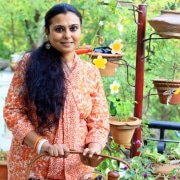
Our posts on post partum health have led to a lot of enquiries on how mothers should be looked after post child birth for good health. So we are fortunate today to carry a piece co-written with Seetha Anand Vaidyam on the traditional post natal practices that were followed in her home for both her pregnancies. This information is important to document and present because many of us lack an awareness and knowledge on what should be done for post partum mothers.
Seetha is a holistic educator, remedial therapist and an author . Seetha works through Ananda Foundation for Holistic and Healthy Learning & Living. Ananda, through its 3 wings — Learn to Move & Move to Learn; Plate to Planet and Art of the Hearts — offers hands on workshops, talks and one on one counseling sessions on Early Childhood, Remedial Therapy, Sustainable Living and Holistic Wellness across India and abroad. Seetha has authored ‘ “Good” Food — a guide to right cooking and eating’ which has 2 editions and 1 reprint to its credit. She can be reached through email.
Along with her piece, we have also included textual references to the practices described wherever relevant to clearly establish that these time honored practices flow from Ayurvedic first principles.
—————————————————————————————————————————————-
Pregnancy – Seetha’s Experience
“Old is Gold,
I was always told,
This advice I followed,
Especially when lo behold!
The most precious being in my hands I hold.”
Seetha Anand Vaidyam
“Good news! You are pregnant!” — My Gynecologist told me. I was 22 years, I had been married for 2 months, I had gone for my check up alone and I was nervous. “What should I do Doctor… In terms of how should I take care, what foods should I be eating…anything I should bear in mind… ? “, I asked her in part shyness, part embarrassment and even fear. I wanted to have children and had planned it, but now that I was pregnant, I was nervous, especially since I was in a new city away from my own relatives.
“Just act as normal as you are. You can do all what you did … just be normal.” my doctor said to me. And I did try. Surely a blanket “be normal” is not the soundest of advice and this is something I re-learned in my research and working with children of different needs in later years.
Pregnancy is the time to begin the nourishment of the baby in-utero. Seldom are first time mothers aware of the extent of influence their lifestyle can have on the baby. Stress, sadness during pregnancy can be especially detrimental. Sadness brings a kind of constriction in the abdominal region for most people, (we use terms like stomach churning feelings etc.) This constriction, tension can damage the tender nerves and muscles of the fetus in-utero. Nothing, nothing but the well being of the baby is paramount in that period and for this the pregnant mother’s wellness of body, mind and soul is imperative.
Krya chimes in: Ayurveda on Pregnancy
Ayurvedic first principles: from the Putrakamiya chapter of Ashtanga Samgraha of Acharya Vagbhatta
“Sattvaviseshakarani Punarmathapithrasvadyoganatharvarthnyah: Shruthyaschabhikshanam
Swopachintah cha karma bhavathi Poorvabhayschethi”
This can be roughly translated as: “ The factors that influence the mental makeup of a child are the mental traits, purity , behavior of the family, cleanliness and purity of parents, the sounds that the fetus hears, the sounds and vibrations the pregnant women hears, and the karmic effects of the past lives of the fetus”.
It is to be noted here that Acharya Vagbhatta says that the collective set of emotions, thoughts, feelings and the sensory stimuli offered by the external environment shapes the mental makeup of your child. In this context , a pregnant woman and her caregiver must evaluate the television she watches, songs she listens to, people she meets and books and newspapers she reads and ask herself if each of these influences are positive and useful for the growing child.
Seetha’s experience as a new Mother:
Fast forward … 9 months later I was in another city, my home city and I was now a mother of a new born! This time, both my mother and me nervously asked the doctor, what I should be fed, if we could follow our traditional post natal care at home (especially since my first delivery was a Cesarean section and my mother had no experience of that, she was very confused as to what should be done), if we could give the traditional “orai marundhu” to the new born etc.
My obstetrician said something similar to my gynecologist in the other city: “Just give her normal foods, no massages, use simple baby soap for the baby, and just stick to mother’s milk and if the baby is not satisfied top feed!!!” And what was worse, she said, “Don’t come running to me if an infection develops in the baby due to use of traditional oils and powders!”
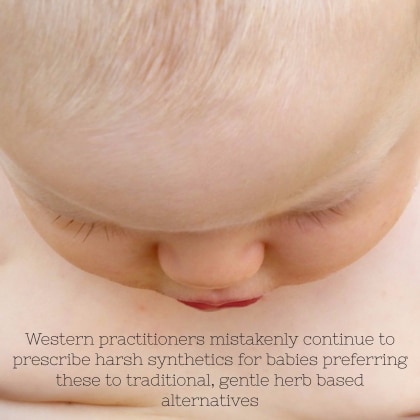
Being from and married into a traditional family, the words of the Doctors were ignored with contempt. My mother and mother in law consulted each other and a few other elderly aunts and grandmothers and the plan for my massage and diet and that of my baby were chalked out.
My pregnancies are not something I relish writing about since till date I wish I had taken better care of my babies when they were inside me! I was in a new city, unaware, helpless and overwhelmed by so many things in my new life! But like they say no point in getting negative with regret. The post natal care that my mother lovingly provided me and my babies hopefully made up for most of my earlier shortcomings. I will share details of traditional post natal care based on my own experiences and observations.
Post natal care is extremely elaborate and specific in South India. Even in today’s times of hospital deliveries, many of the customs are followed.
Ayurvedic post partum regimen : Designing the nursery: Seetha’s experience
The room where the new mother and baby are housed, is kept spic and span and fumigated with sambrani over a ‘kumiti’ or iron stove with coals. It is a well lit room but not overly bright or close to noises, the windows were closed by dusk. The room is kept very warm and cozy. The room is protected from strong sensory stimuli such a smell, sound and light.
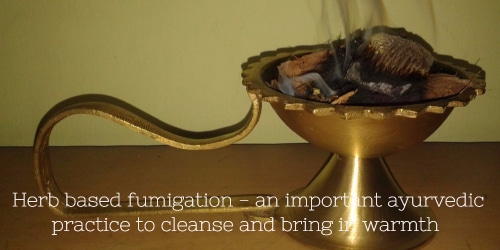
Krya chimes in: What Ayurveda says about the design of the nursery and the room for the recovering Mother
Ayurvedic first principles: from the Balopacaraniya (care of new born child) chapter of Ashtanga Samgraha of Acharya Vagbhatta
“The chamber that holds the new born baby and recovering Mother should be architecturally beautiful, equipped with all necessary materials, should not have too much wind, and should have only soft wind blowing from the east. The room should be entered only by a few elderly women and physicians and should be free from bedbugs, mice, mosquitoes and other vermin. The room should not be too dark, or too bright. The cradle, bed, and bed sheets should be clean, well washed, unwrinkled, soft and fumigated with rakshoghna drugs.
A very important part of the Post partum ayurvedic regimen is the proper selection, design and maintenance of the nursery where the Mother and baby spend their time. It is important to note again, that Acharya Vagbhatta specifies that the baby’s nursery should have restricted entry with good cleanliness and fumigation using certain drugs. This helps prevent infections as Ayurveda considers that both a new mother and the baby have low immunity and depleted strength. The mention of controlling wind in the nursery is also a point to be noted – this is because Vayu (air) is already considered high in the mother post delivery. So additional Vayu is not to be allowed in as a strong breeze. Ayurveda actually classifies wind as having different properties depending upon the direction from which it blows!
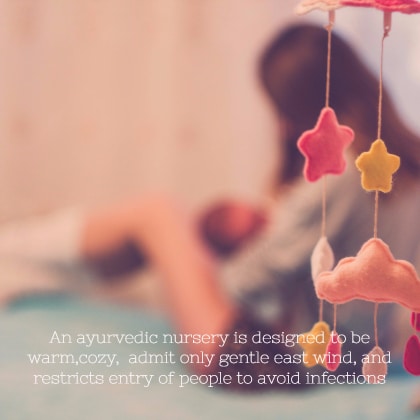
Clothing for Infants : Seetha’s experience
Both the mother and baby are given soft cottons, often used clothes. New clothes for the baby are actually discouraged. Often old cotton dhotis and saris are converted into “jablas” /tie string tops and diapers. The diapers from the first day of the baby made from old saris or dhotis are thrown away and not washed. Later they are rinsed and then soaked in hot water with herbal powders, brushed, washed and dried in the sun. Care is taken not to have them washed by unmarried, young persons who may have an aversion for tending to soiled clothes.
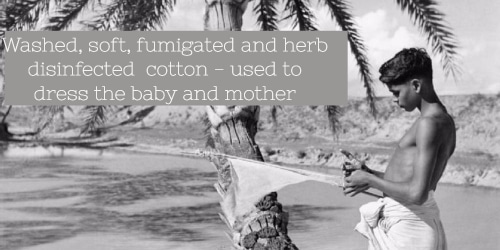
Even the repulsive feelings that a person may have for the soiled clothes were considered strong enough to harm the tender baby. Such was the extent of sensitivity towards the new born! And of course the new mother was forbidden from wetting her hands or staying near moist areas. She was considered to be in a delicate physical state and vulnerable to colds and infections after the hard task of child birth. If the delivery happened during monsoons, the washed napkins were dried indoors but were further dried on top of sambrani fumes that were covered with a metal rice sieve.
Krya chimes in: Ayurvedic post partum regimen : clothing care and fumigation of the nursery
Ayurvedic first principles: from the Balopacaraniya (care of new born child) chapter of Ashtanga Samgraha of Acharya Vagbhatta
“Fumigation of the nursery and the linen and bedding of the mother and child should be done with guggulu and other rakshoghna resins which are mentioned in the prescribed texts. The child and mother should also be adorned with small bundles of herbs like Vacha, and other rakshoghna herbs to ward off the evil eye and deter krimi and germs”.
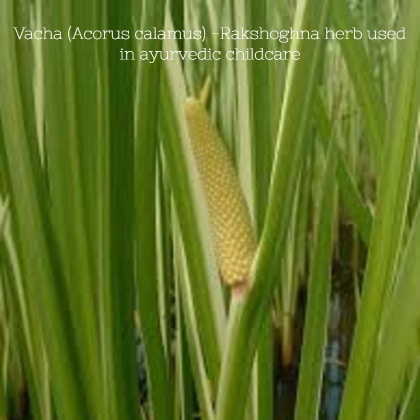
Negative energy and the warding off this are addressed with a great deal of care across Ayurvedic texts including the Ashtanga Samgraha. The use of specific herbs, chanting of mantras and specific stotras, prayer, and restricted access to the new Mother and baby helps protect both and helps them conserve their spiritual energy.
Ayurveda advises washing bed linen and clothing of Mother and baby with a special set of Rakshoghna herbs, bathing in a special decoction containing Rakshoghna herbs, and also liberally strewing these herbs through the room in small herbal pouches. The floors of the room are also supposed to be mopped using a special mixture of these Rakshoghna herbs. The air in the room is also cleansed by burning these herbs in the room everyday. By constantly using clothing that has been purified by these herbs and smelling these herbs through different surfaces, there is a strong multi layered anti septic, anti fungal and highly cleansing effect that accrues to this room, protecting the Mother and the baby from unwanted infections and disease. Further, these herbs are prana positive and vata balancing in nature – so they help uplift the mood, bring in cheerfulness and cultivate a good frame of mind.
Covering the Ears and binding the stomach – Seetha’s experience
The mother and baby are kept warm, ears of the mother are covered with cotton, and the mother’s waist is bound by a folded sari tightly so that the sagging belly after delivery is held tightly. I went through this procedure after both my deliveries, the first being cesarean while my second was normal delivery. The baby’s head and ears are well covered, feet are protected with socks.

Krya chimes in: Post partum ayurvedic regimen: role of vata post partum and post partum belly binding
The procedure described by Seetha above to cover the ears, feet and bind the stomach of the New mother all flow from the principle of correcting excess Vayu. The ears and feet are the seat of Vata dosha, so it is kept covered in both Mother and Baby to prevent entry of excess Vayu.
The space in the stomach is kept physically restrained in the Mother to restrict the space available for Vayu to rush in and fill the now empty womb.
This is seen today as an outmoded practice by many, and worse still as some sort of superstition. But in Ayurveda, physically limiting space available in the body is suggested as a valid strategy to cope with expanding vayu (air) + akash (Space). When this method of stomach tying is diligently done, the mother does not have bloating or weak abdominal muscles, there is less gas and bloating build up, the recovery of the uterus is better and there is less back and joint pain due to an uneven and unsteady stomach. The body and the lower body is in a good harmonious state of balance. This binding of the stomach is an important Post partum ayurvedic regimen along with a daily Abhyanga, which we will talk about shortly.
Unsurprisingly, post partum belly binding is all the rage in western countries where Doula based services charge post partum Moms upwards of 100 dollars per session to coach them on how to bind the belly!
Daily Rhythms of a post natal home and isolation therapies for Mother and Child – Seetha’s experience
A post natal house functioned like clockwork. Sleep, wake, bath, meal, visitor timings were all strictly followed. It is considered healthy for babies to wake up early. Lactating mothers need as much rest as possible and new born babies sleep long hours and need frequent feeds. Child birth is considered to be a tiring effort sapping the mother of energy and certain essential nutrition.
Therefore apart from the special diet given, the daily rhythms or routines were sacrosanct since they also build up the etheric forces/ life forces of the mother which tend to get weak during the birthing process. The baby is tender and depends immensely on a precise rhythm to build its body clock and bio rhythms. Today modern medicine talks so much about the connection between health and bio rhythms, which traditional wisdom always believed was sacred.
Visiting new borns and new mothers was highly restricted. Only certain inmates of the house entered the room. Relatives and friends from outside were allowed for one day on the 11th day after birth where the child is given a formal bath and placed on a cradle and the naming ceremony is carried out. After the completion of the function, restrictions continue and visitors are not encouraged.
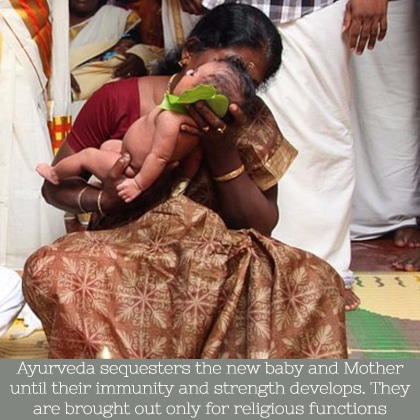
Krya chimes in: Ayurvedic post partum regimen – isolation therapies
Ayurvedic first principles: from the Balopacaraniya (care of new born child) chapter of Ashtanga Samgraha of Acharya Vagbhatta
“Shoorairayodhibheergupathmadrashyam nagaram paraiha
Yatha shishovarpurathdhwagatho thaovirddhibhigrahaiha”
“Just like a city is protected from enemies by brave men with suitable weapons, similarly the body of a child must be protected from different kinds of invaders / evil spirits using appropriate methods”
This is the concluding verse in the Balopacaraniya chapter which brings together the point behind all of the prescriptions of newborn and maternal care in Ayurveda. Every single ritual prescribed is done with the view of protecting the health of the child and mother – the care given post child birth to the Mother and in the first year of the child are seen as critical for establishing the lifelong health patterns of the Mother and Child.
After 30 days, a visit is made by the new born and the new mother to a nearby temple. The child is brought outside the room to sit in a place where the evening sunlight falls. By the end of the second month the child is allowed to be placed in the other rooms of the house. The mother is still not very active and is confined to feeding the baby, in some cases bathing and changing diapers, folding clothes. Physically exerting activities are not carried out by the mother.
Ayurveda maintains that these isolation therapies and sequestration is necessary for the health and well being of the Mother and infant. The acharyas recognize that both of them have impaired immunity: the Mother because she is recovering from Child birth and the Baby because Immune system is as yet unformed. So the best, safest and most non invasive way to protect these 2 individuals is to isolate them from potential sources of infection. The mother is also given complete rest from all household work.
This is very contrarian to today’s practice of encouraging the Mother to quickly assume her “normal schedule”. Mothers are urged to quickly start cooking, walking, exercising and even encouraged to travel and take trips. With little or no family support, post partum Mothers begin taking their babies for vaccinations, check ups almost immediately after they get back home. This is to be avoided according to Ayurveda.
Massage and bathing Rituals – Seetha’s experience
Nothing is discussed, prepared for and spoken about as much as massage rituals in a post natal household!!! In some houses a masseur is appointed these days, but traditionally the mother or grandmothers who were usually in a fit condition bathed the new mother and the new born baby.
Cold pressed Sesame oil or Coconut oil was used for the massage. While the baby received a full body and head oil massage every day after the 11th day of birth, the mother received an oil massage for the body everyday and head oil massage every alternate day. After the 11th day of giving birth. The mother’s body oil was mixed with generous amounts of kasturi manjal and especially rubbed well on the waist, feet, elbows and face.
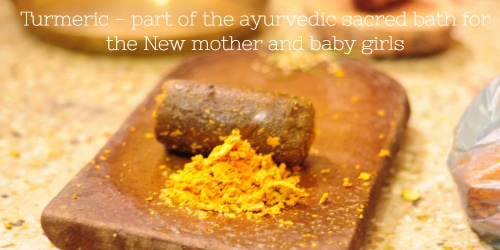
This everyday oil massage of the body helped prevent dryness and itchiness that result after delivery. In case of girl babies too turmeric was added to the body oil. Massaging around the navel area for both mothers and babies was regarded important and also on the area on top of the head where there is a slight depression, considered to be the crown / sahasrara chakra. The oil for the baby was prepared at home by my mother. She would grate enormous amounts of coconut and then extract milk from it, this was gently heated till oil emerged from it. ‘Venda Velichennai’ or virgin coconut oil thus got was carefully stored in glass bottles or ceramic ‘baranis’/’jadis’. This oil smelled like ghee and was prepared in a kind of secrecy away from the eyes of all so as to avoid any feelings of greed or lust for the oil. It is amazing how the new born was protected even from negative thoughts and feelings. Such was the reverence for a new life in the olden days. This is now considered as discrimination and blind belief. Thoughts and feelings produce energies and babies are very sensitive to energies.
The entire bath water was heated and then allowed to cool down a wee bit before being used (cold water was never added to make the hot water tolerably warm) And of course in the days of yore, copper boilers or cauldrons were used to heat water over firewood and coal.
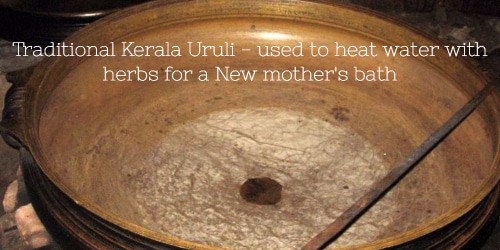
New born mothers and babies thus massaged and bathed glowed with soft and well moisturized skin. Especially mothers and girl babies looked golden due to the application of turmeric. Hair of new born mothers under such care generally became lustrous and thick and abundant. At least for the first three months when she gets maximum personal care pampering!!
Soaps were a strict no no! A Bath powder for babies was made with moong dal/ channa dal while for mothers vasanai podi or ubtans were made at home with various herbs and lentils. Hair wash powders for the mothers were also made at home with Shikakai, karsalanganni, ponnanganni, hibiscus flowers and leaves, lime peels, fenugreek, curry leaves, many other flowers, leaves, seeds, seed pods — which were all cover dried in the sun and powdered. These powders and oils were sent with the new mother when after a period of 3 months she returned to her in laws and husband.
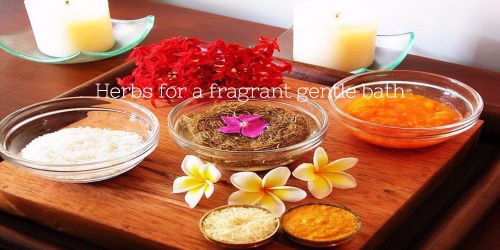
Krya Chimes in: the Importance of the Abhyanga and Snana in the Ayurvedic post partum regimen
Ayurvedic first principles: from the Balopacaraniya (care of new born child) chapter of Ashtanga Samgraha of Acharya Vagbhatta
“An abhyanga with a special herb infused oil should be done every day. Medicated oil prepared, with herbs like Bala, Chandana, Kushta, Ashwagandha, Eranda, Tila and other herbs is ideal for massage. “
There is a special emphasis on muscle and dhatu nourishment and growth and vata reduction given in Ayurveda which percolates the philosophy behind formulating abhyanga oils for babies and new Mothers. As we have discussed before herbs like Bala are extremely useful in balancing excess pitta and vata and are extremely nourishing and helpful in building muscle mass and relieving fatigue and tiredness. Ashwagandha is excellent for skin and also helps with inflammatory conditions that the Mother could face.
The Abhyanga oils for Mother and baby are formulated in Ayurveda with herbs chosen to reduce Shrama (fatigue), improve Bala (strength), and reduce aggravated vata dosha. When the herbs in these special oils percolate through skin, they improve warmth in the body, improve immunity and increase recovery and repair in the body’s tissues. The choice of base oil has a big role to play in how these herbs are absorbed by the oil and transmitted to the body. This Abhyanga must be preferably done everyday for both Mother and baby to ensure a gentle balancing of built up Vata, releasing of all Shrama (tiredness), to rebuild strength and improve immunity and appetite.
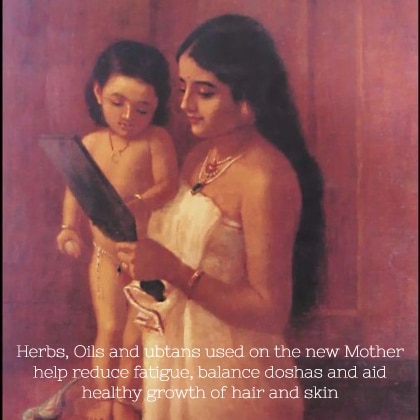
Tila / Sesame oil as mentioned as the oil of choice here and this is different from what has been mentioned in the example above. We must be cognizant here of regional differences and modifications in Ayurvedic practices depending upon the geography and climate. Being hot and humid, Ayurvedic practices in Kerala have traditionally adopted coconut oil as the base oil of choice. However, to control the kapha promoting nature of coconut oil, the oil is usually prepared with certain warming herbs and spices to control any kapha based excesses. Apart from these 2 traditional base oils, in certain geographies, you may see the use of Mustard Oil. However, Mustard Oil is not suggested in Ayurveda for recovering Mothers unless they are used to it, as the oil can irritate and inflame Pitta dosha in skin leading to skin rashes. This is also the case with infants.
We also get questions on the use of other new and recently popular skin oils like Olive oil and whether oils like Olive oil can be used for baby massage. Please remember that Ayurveda works as a system. In Ayurveda, we create Taila (oil formulations) with specific herbs and properties for specific conditions. So for taila abhyanga of Mother and baby, we need the ushna (hot), vyayavi (spreading) and penetrative ability of Tila (Sesame) Taila for our formulations. Therefore, other base oils like Olive oil will not do.
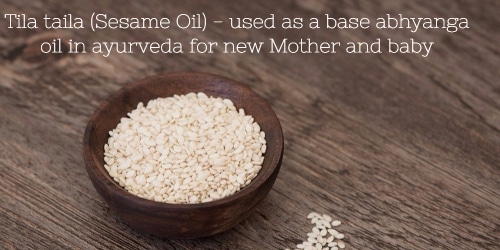
The Snana (bath) after the Abhyanga is equally restorative and health giving according to Ayurveda. Special vata balancing and immunity improving herbs are suggested to be used to bathe with for both Mother and baby. Acharya Vagbhatta and Acharya Charaka recommend bathing the baby and the mother with water which has been boiled with Jivaniya herbs (restorative and vitalizing herbs). Some of these herbs include Mahameda, Kakoli, etc. The purpose of using Jivaniya herbs is to restore Prana to the tissues, promote the longevity and health of all the dhatus and promote deep nourishment.
This herb infused Snana water is suggested to be poured on the body continuously so that the skin absorbs the wealth of herbs inside the water. The water used is as hot as the other can take it and extremely warm for the baby. Snana with hot water is ayu and ayush promoting according to Ayurveda – care is to be taken to ensure that this hot water is only poured below the neck and not from the head onwards.
To cleanse skin after the abhyanga , Ayurveda suggests using “ubtans” and not synthetic soaps / bodywash products. despite the hyper marketing of baby products created with “gentle chemicals”, Ayurveda has always suggested using a carefully formulated mixture of herbs, grains and lentils to bathe in. Such products only remove excess oil from skin, allow the srotas to breathe and help support the developing immune system of the baby.
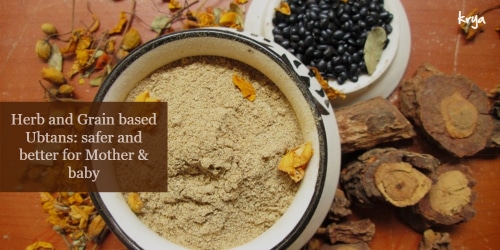
Maintaining the pH of skin is critical in both recovering Mothers and babies, as the correct pH supports the healthy microbiome that boosts immunity and acts as a primary shield against invasive micro organisms. When we enrich the bathing formulation with carefully chosen Jeevaniya and Rakshoghna herbs as is done in the Krya formulations, we create a very powerful Snana product that works in a non superficial and holistic manner. As is recommended in Ayurveda, Krya offers ubtan products for baby boys and baby girls separately. For the post partum Mother, the Krya Intense Women’s ubtan formulated with a mixture of Mangalya and prana positive and immunity building herbs is strongly recommended.
Using herbal Kajal – Seetha’s experience
After bath babies and mothers were well dried and gently warmed with sambrani fumes. Kajal or kann mai was the only cosmetic item that was allowed. This was applied even to the eyes of boy babies and their forehead marked with a dot/bindi/tilakam. In order that the bindi/ tilakam/ pottu did not smudge, a bit of vibuthi that was again home made with cow dung ash was rubbed slightly over it. Thus there was no need for any chemicals in body care. This not only ensured glowing skin but also made sure that there was adequate probiotic microbial activity in the body which is the foundation of immunity and health.
The fragrance emanating from new born babies and mothers under such a personal care regimen has to be experienced to understand the value of such homemade, pure, chemical free personal care products. My mother’s sister sent me home made kann mai made from castor oil, pachcha kalpooram, nadyaravattai flower extracts. It smelled good and brought a refreshing tingling in the eyes when applied.
Krya Chimes in: Collyrium and its importance in Ayurveda
Collyrium / Kajal is an Ayurvedic medicine and is so much more than a regular cosmetic product. It has been designed to protect the eyes which are an important secondary seat of Pitta by reducing excess Pitta. As the eyes are also made up of kapha based fatty substances, the use of herb infused Kajal helps the healthy removal of fat based toxins from the eyes .
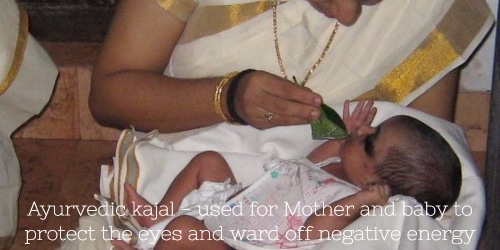
Rasajnana is a famous Ayurvedic extract made from Daruharidra, which is used in Ayurvedic Kajal. Rasanjana when prepared properly helps promote the dislodging of kleshma (fat based toxins) by triggering a watering reaction in the eyes.
The use of Collyrium is mentioned in the Dinacharya portion of Ayurveda for BOTH adult Men and Women , and not just for children or infants. Different kinds of collyrium formulations are mentioned in the Ayurvedic texts: some work to clean the Kapha in the eye and dislodging dirt – so they promote an intense irritating and tearing effect in the eye, which helps dislodge waste products from Kapha. Others are suggested to hone and keep Pitta in check – so they are to be used in the day time and give a cooling sensation to the eye.
Generally we are asked to use the scraping and irritating kind of collyrium roughly once a week and the pitta balancing collyrium the rest of the time. Collyrium use is prohibited on abhyanga days and other special occasions like menstruation where the body is already undergoing a deep cleansing and detoxification process.
It is important to note here that Collyrium is not the same as lead and toxin based “eye kajaal pens” and Eyeliners which have appropriated the word “kaajal” to sell lead and toxin based eye products. Kaajal in the Ayurvedic and Indian context refers to herb and fat based special eye preparations which serve a particular purpose of cleansing the eyes. The use of such toxic eye products is not recommended for anyone. We suggest sourcing a properly made ayurvedic kaajal instead.
Kaajal for baby is to be applied using a clean index finger or little finger. Ensure that the hands are well cleansed before doing this.
Mother and Baby’s diet: Seetha’s experience
While babies were strictly only fed mother’s milk, they got just a dash of ‘orai marundhu’ which was a mixture of a set of seeds/herbs, gold etc which were rubbed on a stone along with a drop of mother’s milk and applied to the baby’s tongue. Babies were fed in a private area and a serene silence was maintained during the baby’s feeding time. In case baby is taking very short feeds and falling asleep only to wake again very soon for another feed, the mother is advised to caress the ear lobes gently. I was given this advice too and I found that the baby sucked for longer when I did this!!! Babies were fed with solely mother’s milk for upto 10 months and were fed mother’s milk in addition to other foods even after the first year. Some scriptures and ancient texts indicate that mother’s milk was given till the fall of, milk teeth. With changing times, consciousness changed and priorities changed.
Children lost their dreaminess, unconscious behavior and innocence prematurely. So as a result, it was considered embarrassing to feed children with mother milk once they became conscious. Mother’s milk is loaded with microbes and lauric acid. This helps the growth of beneficial gut bacteria which are the essentials of a strong immunity system in the body.
The first thing a new mother is given to eat is a ‘leghyam’ again home made with so many different heat inducing herbs, spices, lemon, ginger, ghee etc. A gooseberry sized ball of this is given in empty stomach. This is a decongestant, anti inflammatory and digestive. The beneficial properties of this is passed to the baby through the mother’s milk. Babies and mother’s are especially hungry after a laborious bath!! So usually the mother’s were fed while the baby is being bathed so that they are not hungry while feeding the baby. Bathing soon after a meal/feed for anyone was absolutely forbidden.
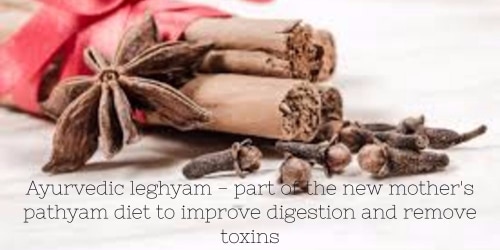
Mother’s diet consisted of short frequent meals. Parboiled rice was given preference since it is easier to digest. Tuvar dal and channa dal were avoided since they induce vata or gas. Moong dal was given in limited quantities. Lots of iron rich curry leaves, drumstick leaves, bean varieties, perandai or bone setter thogayal that is rich in calcium, dried sundaikkai or thai brinjal, manathangalikkai which had properties of healing wounds and ulcers were included every day. Gourds were by and large avoided, so were brinjals, potatoes, sweet potatoes etc. In short gas producing foods were avoided. Pepper was the preferred spice and chilies were avoided or minimized.
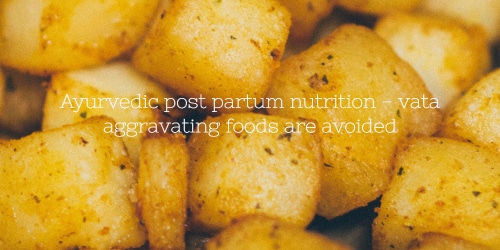
Betel leaves were given at the end of the meal and even in the evening to aid digestion and bring down acidity. Ginger was another spice that was used every day. Coolants and cold foods were completely avoided. Ghee was served generously. Water was given in restricted amounts. The use of tamarind was restricted. Peanuts were avoided. Bananas especially the nendram variety was given to satiate odd time hungers. Par boiled rice gruel/ puzhungal arisi kanji with salted narthangai or salted lemon pickle were given. The baby’s stools were an indicator of whether the diet of the mother was suiting the baby. Greenish or whitish yellow stools were considered not healthy and immediately changes were made in the mother’s diet. Curds were not given.
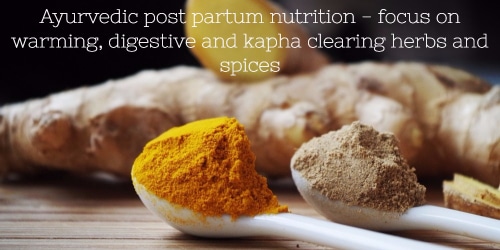
The practice of giving white bread, certain types of vegetables, etc might have crept in during the in-between period. What are truly traditional needs to be understood. After the entry of the Britishers in 1600 A.D., many traditional customs were modified. Cropping patterns were altered. Grains traditionally grown were discontinued and certain foreign ones introduced. Therefore even what has been practiced for 400 odd years may not be truly traditional!
Krya Chimes in : Ayurvedic post partum ayurvedic regimen – role of Ahara
Ayurvedic first principles: from the Balopacaraniya (care of new born child) chapter of Ashtanga Samgraha of Acharya Vagbhatta
“A child should not be fed with the breast milk of the women who is hungry, grief stricken, tired, exhausted, angry, whose tissues are diseased, who is pregnant, or who is indulging in unhealthy foods”.
Ayurveda is very particular about the health of the mother as this science recognizes the deep spiritual, mental, emotional and physical connection between the Mother and her baby. By nurturing the Dauhridini (pregnant woman) from the stage of pregnancy, keeping in her in good spirits and providing her loving emotional and physical care post child birth, Ayurveda ensures the baby too is well looked after and has the chance to develop well.
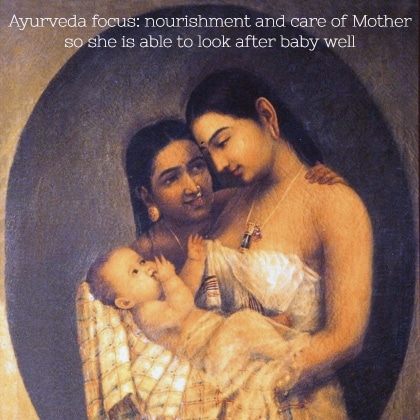
Many of us have seen tired, exhausted and depressed or even hungry modern mothers tending to their children’s needs. This is not a healthy practice and you are not supposed to sacrifice your well being for that of your child. Ayurveda recognizes that only if you are nourished and healthy, can you give your child the right environment to be nourished and healthy as well.
In fact Ayurvedic Acharyas say that only a well fed, and rested Mother should breastfeed the child. Mother should not attempt to breastfeed the child if she is hungry, irritable , etc as these emotions derange certain doshas like Pitta in the body, affecting the quality of breastmilk. so Ayurveda advises setting up a schedule where the Mother is fed and ready before the baby and is in the right mental and physical frame of mind to further look after the baby.
A healthy post partum diet is extremely essential and should be well planned by the family as soon as the Mother and Child come home. A good ayurvedic diet can mean the difference between good energy and poor energy, quick muscle and ligament recovery, good energy and well being of the mother and fast shrinking of inflamed tissues and organs after the delivery. The exact details of what is given vary by geography, local food traditions and the specific community that the Mother belongs to. However the principles behind choosing these foods remain the same.
There has been some dilution in our food tradition and practices when it comes even to the post partum diet. We advise sticking to traditional Indian foods, locally available meat and fish, and traditional vegetables and fruits and cooking methods as much as possible and avoiding western processed items like bread, oats, etc.
All the Ayurvedic texts that refer to kaumarabhrityam (gynecology, obstetrics and child care) have given special importance to the pathiyam diet that is given both to the pregnant woman and the recovering Mother. The purpose of the diet in each stage is different – in the pregnant woman the diet is meant to be nourishing, full of good fats and cooling. The diet is supposed to nurture the fetus at every stage of the development and not cause any ama or toxic residue in the body.
The pathiyam (restricted and carefully selected) post partum diet has a different purpose. The food is meant to nourish all the dhatus of the woman which may be depleted following child birth. It is also supposed to ensure that the breast milk is full of the nutrients required by the growing child. The food is sweet (madhura) and kapha promoting in nature to build the dhatus and nourish the tissues. But despite being Madhura and promoting of good Kapha , this diet does not promote excessive fat / weight gain as that is detrimental to both Mother and baby. As the new Mother is expected to be Vata aggravated, Agni is usually depressed. So the cooking methods, spices and foods chosen also have an agni kindling property without being pitta aggravating or vata aggravating. Therefore the selection of meats, fruits, vegetables, and cereals to make up this post partum diet is very deliberate and well thought through.
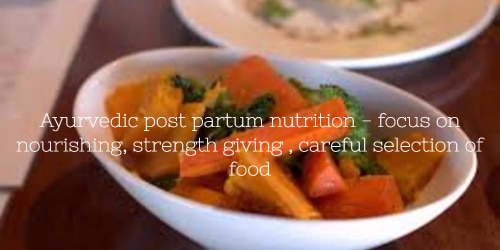
The time immediately after delivery is usually an extremely restricted diet. It is high in nourishing liquids like milk cooked with galactologue herbs like Shatavari, vidanga and ghee (both medicated and regular a2 cow ghee). Cleansing mixtures like panchakavya is also used to stimulate digestion, remove ama and toxins from the body as these may pass onto the baby through the breast milk. Post the first 15 days / month 1, the recovering Mother is put on a more solid diet. A very careful selection of lentils is given – if the Vaidya feels that vata is high, she may be advised a diet without any lentil except Mung dal and not lentil based vegetables like beans. Hard, difficult to digest lentils like peas, rajma, channa are usually restricted.
The exact post partum diet varies by geography and community. In certain communities the Mother is given nourishing meat soups (Mamsa rasa), usually made from Mutton. Other meats like chicken and certain kinds of Fish are avoided. “Hot” cleansing greens like Moringa are given, depending upon the season. No matter what the exact foods are, the diet is warm, more liquid based, cooked with warming and srota cleansing and vata reducing spices like pepper, dhania, jeera, and hing. Plenty of nourishing and dhatu building foods like Milk and A2 Cow ghee are also added to the diet.
A2 Cow Ghee is key to the post partum recovery diet to promote adequate digestion, keep the body in a tridoshic state and reduce vata dosha. Warming spices like Maricha (black pepper), Sunthi (ginger) and Jiraka (Cumin) are also liberally used in the food to expel wind, promote digestion and cleanse the respiratory passages of mucous if present.
General atmosphere in a post-natal home – Seetha’s experience
Care was taken to avoid overwhelming sensory stimuli. Noise levels were restricted. Loud noises which would startle a sleeping baby or disturb the deep sleep of a new mother whose sleep depended on her child’s sleep were consciously avoided. Very often grandmothers or elderly members of the house or the new mother would sing lullabies and other specific baby songs.
The entry of too many visitors as mentioned earlier was avoided. In some communities, the inmates of the house where a baby is born would also not go to other houses for a period of 30 days. This was like a quarantine that was observed. The close relatives of the new born could not even attend functions and festival celebrations for a period of 30 days after the birth of the child in their family. Feeding time of the mother is considered sacrosanct. The mother is advised to be calm while feeding the baby since the babies are tender in every way and would be affected by any physical, emotional or mental disturbances around them.
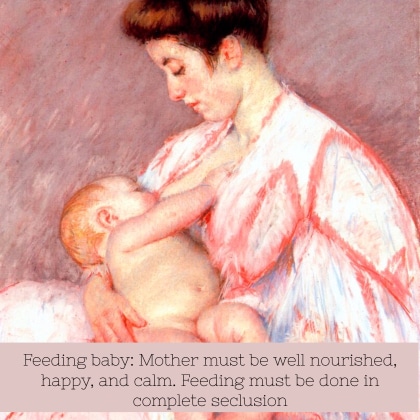
A post natal care household was full of busy activity — preparing bath oils, powders, fresh legyam, meals, fumigation, washing clothes etc. So there was no time for gossip or idleness. Today we hear so much about post natal depression and mood swings. In a traditional home, where so much activity is going on there is so much to observe and participate, to absorb and learn that one does not get the time to become depressed. Moreover the food given is so carefully chosen that it balances hormones and leads to emotional stability. At the end of 3 months and in much earlier times after 5 months, the new mother left the luxurious pampering in her mother’s house and returned to her in-laws and husband.
Even then till the baby turned one year old, that is till the mother is lactating, she was not allowed to cook or go into the kitchen since the heat from the kitchen fires might interfere in the lactation. Mother’s milk was considered to be ‘oushadam’ or medicine and hence every measure was taken to safeguard it. New mothers were pampered, nourished and their motherhood and the baby’s childhood were cherished.
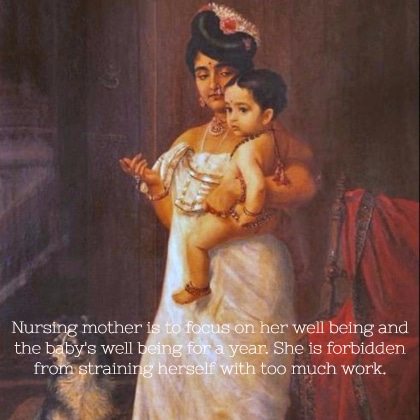
In course of time life became fast paced and therefore roles changed and so have health and fitness. Stamina and stress do not go hand in hand. The elders in the family can no longer perform all the chores required of them during the birth of their grandchildren, mothers are not relaxed enough to lead life on a slow track for a certain period of time. Ambitiousness, restlessness, changed priorities have all resulted in the lack of reverence for the new born and the new mother.
The rise of full time working mothers with limited maternity holidays, emergence of packaged baby feeds, over exposure of children to excessive sensory stimuli prematurely — have all resulted in weakened bodies, minds and souls — of mothers and their babies!!
I hope this article helps in reviving the due reverence for the new born and the new mother. I hope at least some aspects of post natal care can be incorporated if not all.
Krya Chimes in: The value of the Ayurvedic post partum regimen and isolation and sequestration
Krya works extensively with post partum Mothers for both hair and skin and for baby’s hair and skin. A common thread we have seen across these hundreds of interactions we have had with post partum Mothers is how exhausted and alone these new mothers are. Their current reality is a far far world away from teh wonderful world that Seetha described in this post today, and has been lucky to be a part of.
Many of us are a part of a dismembered daisy chain – our elders lack the requisite Ayurvedic knowledge, as do we. We work almost exclusively with western trained allopaths and ob-gyns who are many times dismissive of traditional post partum rituals and practices. This leaves a large gap in our knowledge and our ability to understand and follow the carefully thought through Ayurvedic post partum regimen.
Isolation and sequestration is practiced as a valid strategy in Ayurveda in 3 cases: post surgery / illness, during menstruation and post partum for teh mother and baby. The reasons behind the isolation and sequestration in each case is for slightly different reasons. The isolation and sequestration practice post partum is suggested for both physical, and mental reasons. Ayurveda is extremely aware of post partum depression as a concept. This is seen as a direct fallout due to vata aggravation, physical trauma in the body, exhaustion and sleep deprivation: each of these reasons adds back to a greater and greater aggravation of Vata dosha in the body. When vata is aggravated, the mental repercussions of this are anxiety, insomnia, depression and lack of enthusiasm and energy. When other doshas are vitiated we can see the mental effects like this. When Pitta dosha is additionally affected, we can see anger, high grief and excessive crying . When Kapha dosha is vitiated additionally we can see sloth, lack of interest in anything, excessive sleeping, high body fatigue and a complete lack of energy.
To ensure Vata aggravation is continually balanced and other doshas are not aggravated, Ayurveda advises isolation and sequestration of Mother and baby for upto one year. The timing is decided by the trauma experienced during delivery, weakness and recovery rate of the Mother. But , even for normal deliveries and healthy recovery rates, Ayurveda advises isolation, care and sequestration for atleast 6 months. Any external trips are carefully regulated and are to be performed only as a part of the samsakaras (routines) prescribed for the Child, like the first visit to the temple, Karna Bhedana (ear piercing), Anna prashana (feeding of solid food, etc). Every such event comes with a larger group, and a potential trip, so these are evenly spaced and are asked to be done during specific months in teh Baby’s first year, giving the Mother and baby adequate rest and recovery periods between.
Right from the delivery through the post partum period, the Mother is asked to be treated with great kindness. The Acharyas ask experienced women who have borne many children and who are by nature positive and cheerful to assist the Mother during delivery. Similarly minded relatives / inmates like a kind and compassionate grandmother is asked to be the “attendant” for the Mother during her post partum recovery. To infuse a good amount of the correct spiritual energy into the home, the Father is asked to invite Rithwiks and learned Brahmans to perform homas , to recite Mantras and also to recite passages from spiritual texts like the Srimad Ramayana frequently. This spiritual practice is advised during pregnancy for the Mother and also post partum to help promote sattvic thought, improve resistance to disease and ensure there is no aggravation of dosha leading to Mental imbalance.
The family is asked to treat the recovering Mother and baby with lots of love and affection. Handling of the baby is restricted only to experienced hands and the Immediate parents. The baby is to be treated with care and affection and should not be scolded, frightened or thrown into the air or played with violently.
To avoid infections, and to allow the slow and gentle recovery of the body, the Mother is advised not to travel or do any physical work. This is because Ayurveda treats illness in port partum women extremely conservatively as any aggressive treatment can be rejected by her body which is still tender and also negatively influence the baby who is dependent on the Mother for nourishment. So as a practice, disease is to be avoided by isolation, careful regulation of visitors, Mantra chikitsa and by the generous use of herbs in the nursery, for washing clothes, bathing in, applying as unguent, etc, and also through food.
Isolation and sequestration may seem very strange to modern mothers who are asked to exercise, travel, and resume their “normal” life as soon as they recover from delivery. Ayurveda tells us that women need a recovery space which is a “new normal” between delivery and resuming their normal set of activities. In fact, using the phrase “normal set of activities” is itself misleading as the women’s entire life has changed after delivery and she can no longer go back to the previous set of activities.
The following of these recommended Ayurvedic post partum regimes can being in a great difference to the Mother’s health, mental well being and also greatly help shrink inflammation, repair tissue level trauma and bring back balance and harmony. This is a subject on which we will be putting up many more posts to share different kinds of traditional post partum regimens followed by women, and more posts on post partum ahara, the importance of abhaynga, etc for recovering post partum women.
To Sum up: Ayurvedic post partum regimen: a first person account
Krya would like to thank Seetha Anand Vaidyam for her generous, authentic and detailed piece on traditional post natal care today. This very important tradition of nourishing the mother and caring for her mental, emotional and physical well being which used be such an important part of Indian culture is fast disappearing today.
We hope that this post brought home the importance of these practices and you were able to appreciate the deep rooted Ayurvedic first principles behind these practices. Even if you are unable to recreate the exact set of rituals described by Seetha in this post, we hope you are able to incorporate atleast few parts of these rituals in your life or help out another young mother with knowledge about these practices.
Krya will carry many more pieces and first person accounts of Ayurvedic post partum regimens and how they have benefited other recovering mothers. In addition we will also carry pieces on the exact parts of an Ayurvedic post partum regimen which you can use to set up your own routine or to guide someone else with theirs.
If you have any questions on this, please email us.

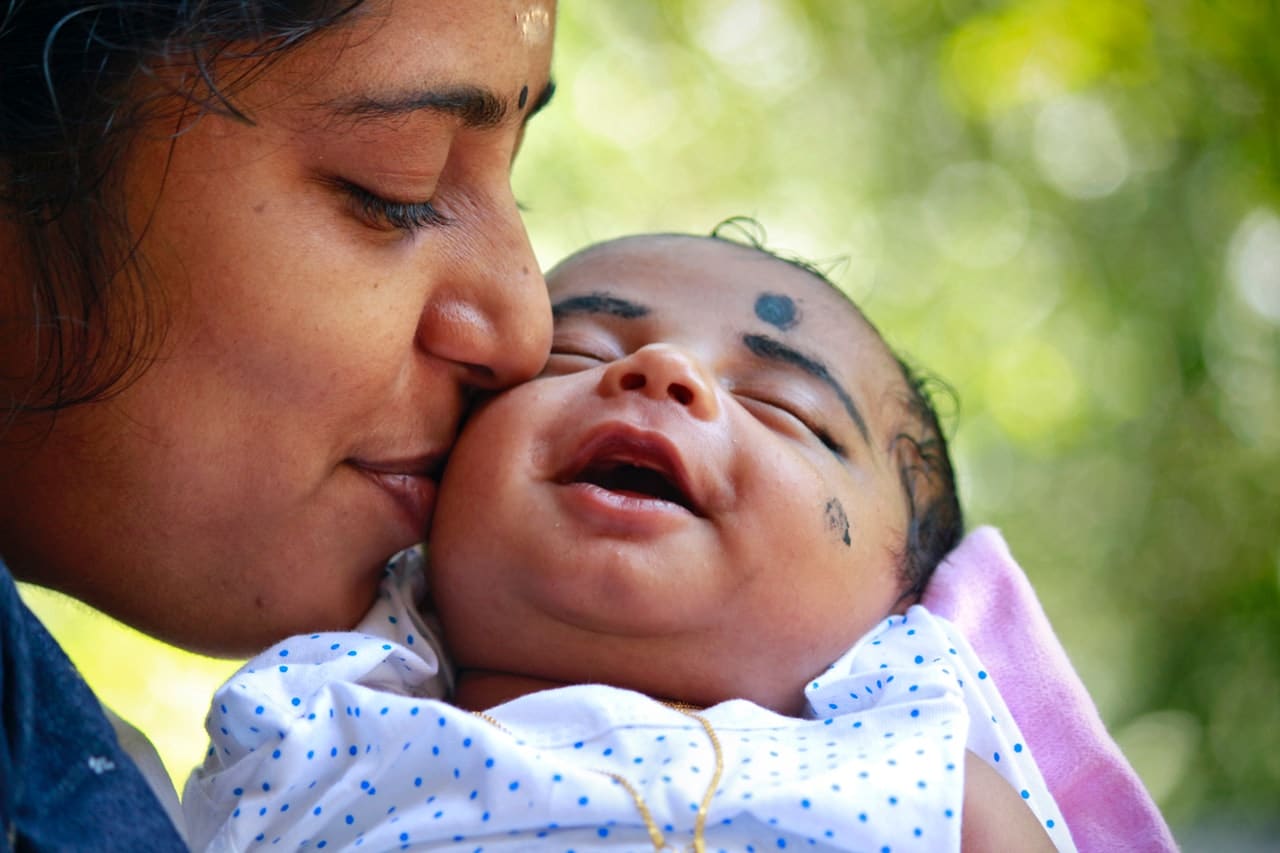
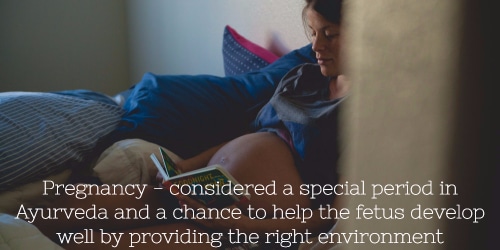



The blog is a true celebration of our long lost culture . Its indeed such a misfortune that we are aping the west blindly dismissing the science and wellbeing behind our traditions . Thanks a lot for the lovely post . It is Indeed an eye opener.
Interesting, informative and insightful.
Indian traditions are usually backed by scientific reasons and we should feel proud to follow them. Its beneficial for us and our babies as well
loved the article. quite a few practices was done for me by my mother and mother in law. bless them sweethearts. your article was very helpful. could you also mention which herbs are good for cold climes and which for hot weather.
hello
Very nice to see such a thorough write up especially for new mothers like me.. I can atleast follow a few of these gems of tradition.
Would eating millets like kodo, barnyard (instead of rice) increase vaata? I am following a pathiyam diet but my 1month old daughter is having a lot of gas and discomfort.
Trying to figure out what I need to change to help 🙁
Meenakshi: hello! Yes millets would increase vata – plus they are not considered as nourishing and full of ojas like rice is, especially for new moms and babies. Are you having vata balancing food, plenty of milk and ghee as part of your diet?
Good to read….. but difficult to follow in today’s world since we do not have the adequate facilities for the same…..even in olden times it is possible only for the well to do families…..it’s a dream post partum recovery wherein so much effort is put in for the new mother & child..
Rajani: I hear you. We wanted to share this account not to make us feel helpless or discouraged – but atleast to educate / inspire. even if 10% of what is mentioned here is followed, it will make a huge difference to the health of the mother.
Thank you for sharing these personal accounts of such a detailed and elaborate post partum experience. I had a c section with my first baby and even though I thought a lot of what was done (I live outside india) was quite strict and elaborate, now I think wow, I could have done so much better. I am now pregnant with my second and almost full term and hoping I can do a few things better but the key here as it has already been mentioned is to try our best to do what’s feasible within a short period. From what I understand, first 40 days or the fourth trimester is very crucial and a lot of western doulas are now seeing the benefit in them. Is it feasible given our nuclear family or single mom household? Well, again do your best! Ask for help. See who can help with what and it might put a financial strain temporarily BUT imagine paying for all this later on in life when they arrive in the form of uninvited diseases and ailments in the mother’s body! Ugh! Good luck to all the mamas out there and thank you to those that provide us with this valuable information that is slowly dying with each decade.